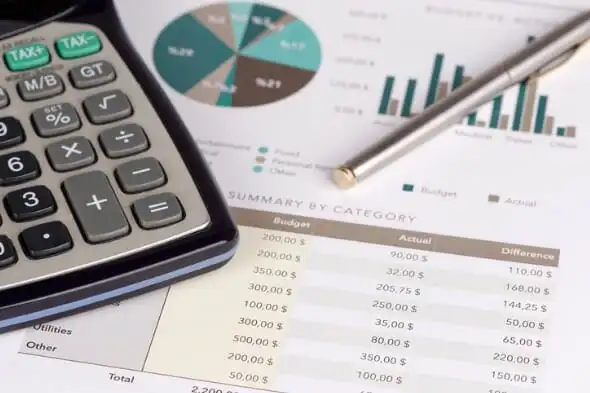When browsing a bank’s account options, you’ve probably come across certificates of deposit, or CDs. These are time sensitive accounts that grow your initial deposit for a given amount of time, depending on your preferences. In these CDs, your money grows according to a set interest rate at the time of account opening. This rate is set by the issuing bank and can fluctuate with the interest rate economy. A market-linked CD, however, works a little differently.
A financial advisor can answer questions about adding market-linked CDs to your financial plan.
What Is a Market-Linked CD?
A market-linked CD, also known as an indexed CD, equity-linked CD or market-indexed CD, is a type of certificate of deposit that’s based on a market index, a basket of equities or a combination of the two. This determines the returns you can see from the CD. So when the market is doing well, so is your CD. However, the opposite is also true, with your CD’s performance declining when the market drops.
Market-linked CDs typically come in longer terms than a standard CD. They usually last years, whereas standard CDs can be as short as one month. And just as with regular CDs, market-linked CDs are still FDIC-insured up to the legal limit of $250,000 (more on this below).
How Do Market-Linked CDs Work?
Regular CDs grow your money according to a set interest rate. Once you open and fund your CD, the rate remains the same throughout its term. Even if rates decrease or increase during that term, these changes only affect any new accounts opened.
This is not the case with market-linked CDs. Since they depend on a market index (like S&P 500) or a basket of equities (or a mix), the CDs’ performances adjust according to any changes in the market. A market-linked CD’s return is determined by its participation rate within the linked index. For example, let’s say an index sees a gain of 10% and your CD has a participation rate of 90%. Your CD won’t reflect the 10% market gain. Rather, your CD will see a gain of 9%, or 90% of 10%. Your participation rate can exceed 100%.
Because your CD’s performance is linked to the market, it is possible that your account doesn’t earn anything in the event the market dips. Some issuers do offer protection against this, however, with a guarantee for a base return. That way, you’ll never earn nothing on your investment.
To the opposite, market-linked CDs are also usually subject to an interest cap. This sets a limit on the percentage of growth your CD can earn. This protects the CD issuer from losing too much money to its market-linked CDs.
Just as with a regular CD, you’ll face a heavy penalty if you make any early withdrawals. The whole point of a CD is you leave it alone for the length of its term and withdraw funds at maturity. So if you suddenly need to withdraw any funds before maturity, you’ll lose much of the account’s earnings. However, market-linked CDs can be “called” by the issuing bank. This means the bank can choose to redeem the CD before its maturity date. The account will have a call price, which determines how much you earn in the event the bank calls your CD. There is a chance the call price is higher than what you would have made at maturity, but there is also the chance that it provides a smaller payout.
Pros of Market-Linked CDs
Investors who may not want the risk exposure associated with stocks, or who want stronger returns than traditional CDs, may want to consider the following benefits of market-linked CDs:
- Safe: Your principal is backed by the issuing bank, even if the market declines, so long as you hold it until maturity.
- Insured: Principals in market-linked CDs are protected up to $250,000 by the FDIC or NCUA. This coverage does not extend to earnings, however.
- Returns: In addition to a guaranteed principal at maturity, market-linked CDs offer potentially higher returns than traditional CDs because of their diversification across stocks, index funds, and commodities.
Cons of Market-Linked CDs
Like all investments, market-linked CDs come with their own set of risks. Here are three common drawbacks that investors should also keep in mind:
- Volatility: Because market-linked CDs are tied to equities, investors are more susceptible to changes in the market and interest rate fluctuations than traditional CDs.
- Costs: It is possible to hold a market-linked CD until its maturity and only receive the principal in return, meaning you’ve made no money on it whatsoever. Additionally, any interest earned must be reported annually and is taxed at a higher rate than the capital gains on other types of investments.
- Not liquid: Once invested in a market-linked CD it is difficult to sell before its maturity date, tying a lump sum of cash to a date in the future. It’s not impossible to get the money back but expect to take a loss or incur fees if you withdraw early.
How to Calculate the Return on a Market-Linked CD

To calculate your market-linked CD’s return, you have a few choices. One method is the point-to-point method. This looks at two points, or values. The first, or starting point, is the value of the index when the CD is issued. The second value, or ending point, is the value of the index on a date right before its maturity date. The difference of these two numbers, or a percentage of that difference, will indicate your CD’s return.
Another method, the average method, takes the average of different values of the index. These values can be pulled from several different dates, or points, throughout the CD’s term.
Should You Invest in Market-Linked CDs?
The big appeal of market-linked CDs is that they have the potential to secure much higher returns than a standard CD. This is certainly true if the market is performing positively. However, as with any market investment, you do risk not making any money if the market isn’t doing well. If you want to open a market-linked CD, you should be prepared to take on this kind of risk.
You should also keep in mind that your market-linked CD has the chance of being called by the issuing bank. This can result in a much lower payout than if the CD had been held to maturity. The payout may even be less than a standard CD.
Usually a standard CD offers a better option. They provide much more stability since you know exactly how much your account will earn, how long it will be earning money and there is no room for loss (unless you make an early withdrawal).
Bottom Line

Market-linked CDs offer an alternative to regular CDs with potentially higher returns. However, higher returns are not guaranteed and often don’t happen. Opening a market-linked CD is a big risk. If you’re considering opening one for big returns, it may be better to check out some of the best CD rates instead. That way, your returns are guaranteed.
Tips for Investing
- If you’re new to investing, consider securing the services of a professional. A financial advisor can help you create a financial plan to reach your investing needs and goals. SmartAsset’s free tool matches you with vetted financial advisors who serve your area, and you can have a free introductory call with your advisor matches to decide which one you feel is right for you. If you’re ready to find an advisor who can help you achieve your financial goals, get started now.
- If you’re looking for high investment returns, a market-linked CD may not give you what you’re looking for. Instead, you may want to look into something like online brokerage accounts. These offer you more control over your investments, allowing you to buy and sell stocks online.
- For those who need a more passive approach, you can look into a robo-advisor, like Betterment. Robo-advisors manage and optimize your investments automatically, so you can sit back and relax while you earn money.
Photo credit: ©iStock.com/indysystem, ©iStock.com/cigdemhizal, ©iStock.com/MicroStockHub
